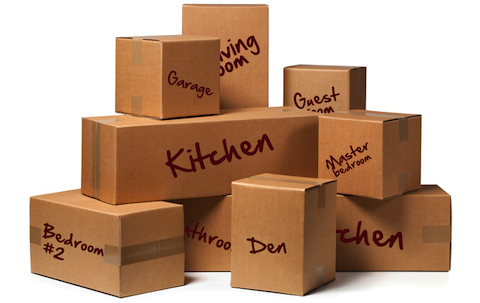
Moving day is often difficult for both body and mind. You spend the day moving boxes, hauling furnishings and lifting items in and out of vehicles and up and down stairs. While lots of possessions can become harmed during a relocation, the most typical damages are injuries to yourself or to people who have come to assist.
Not just will an injury take you out of commission for the rest of day (not to point out during days of unpacking later), however some injuries can cost you in medical bills and time off work. With some preparation and mindfulness, you can ideally avoid hurting yourself on moving day. Think about the following tips to assist you remain safe.
Practice Excellent Kind
Many moving injuries come from utilizing inaccurate form when trying to heft heavy or bulky objects. Keep your back straight and your head erect when lifting something heavy.
Never be tempted to raise products above your head if you are brief. You might drop the item and it might hurt your head and neck if you overbalance. Other safety tips consist of:
Keep your feet at shoulder width apart when lifting. This offers you a more solid foundation and will keep you from twisting or flexing unnaturally.
Carry boxes at eye level or listed below. Never twist from side to side when bring a box or furniture piece.
Wear helpful shoes with good grip for slick truck bed walkways, floorings and surfaces, particularly in the winter or when it rains.
Keep all movements slow and steady. If you are pushing or pulling a things, always attempt to keep motions controlled rather of jerking.
You can practice great kind and build your strength beforehand if you know you have to prepare for a relocation. You may even spend some time doing squats and deadlifts in the health club to get prepared for the wedding day.
Keep an Emergency Treatment Set Handy and Stocked
Back injuries from raising with bad type are not the only injuries you might see on moving day. Smashed fingers, twisted ankles and other small but agonizing injuries are still typical. Rather of loading all your emergency treatment materials, ensure you keep them in a place where they can be easily accessed by those who are assisting with your move.
You'll wish to make certain you have over the counter pain medication, wipes for cleaning out cuts and scratches, large and small plasters, antibiotic ointment, medical tape and at least one tensor bandage for sprains or stress. Let your assistants understand where the first aid set is and the best ways to access it in case somebody gets a small injury.
Know Your Limitations
Sometimes, particularly if aid is limited, you'll press yourself hard on moving day. It's essential for everyone to understand their limitations. If a home appliance is too heavy to haul yourself and you do not have an additional set of hands, set it aside and cover it with a tarpaulin until you can get some help.
Pushing yourself to carry more than you can raise or to move more when you are tired will only put you out of commission, leaving the relocation unfinished. Make sure not to:
Run or move too rapidly, even when bring light products. A constant and slow rate is best for endurance and injury prevention.
Bring more than one box at a time. You run the risk of dropping among packages, potentially hurting your feet and breaking exactly what is inside package.
Move furnishings alone. Some furniture can be brought by someone, however you should always have a spotter nearby in case you need aid.
Professional movers exist so that you don't need to push yourself to the limitation. If you have limited volunteer aid for your move, employing help is worth the financial investment merely for injury prevention alone.
Secure Yourself
You can likewise lower the threat of injury by offering defense for your assistants and yourself. Make certain to:
Use gloves on your hands to avoid smashed fingers. You might still get some bruises, but circumstances of open wounds will be decreased.
Firmly insist that every individual wear close-toed shoes. Shoes with steel toes are the very best for preventing foot injuries, however not everybody has a set. Sturdy work boots or quality tennis shoes will also work. High-top tennis shoes offer the finest stability and versatility. Never permit anyone to move items while using flip-flops.
Supply hand trucks and sliders to lower the amount of manual hauling required.
Avoid using streaming clothing, like a gown, scarf, or baggy shirt that can capture on corners or snag on furniture.
Finally, never ever allow someone (including yourself) with a medical condition, a previous injury, or other extenuating condition to assist with moving heavy items. If they will be up to the job, you simply do not understand.
While many belongings can become damaged during a move, the most typical damages are injuries to yourself or to people who have come to help.
Numerous moving injuries come from utilizing inaccurate form when attempting to heft heavy or large items. Back injuries from lifting with bad kind are not the only wounds you might see on moving day. Rather of loading all your very first help materials, make sure you keep them in a place where they can be easily accessed by those who are assisting with your move.
In some cases, especially if aid is restricted, you'll push yourself hard on moving day.
No comments:
Post a Comment